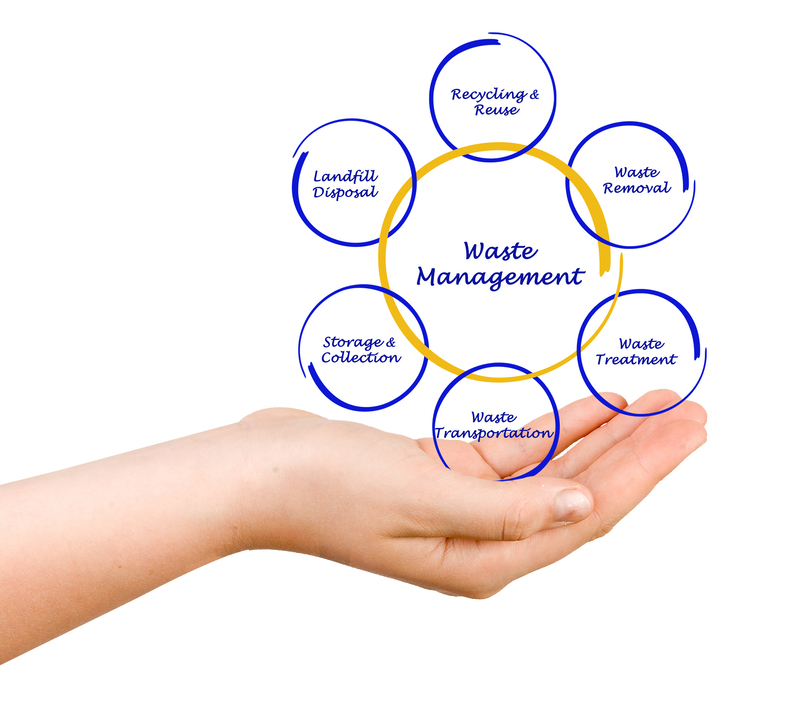Microplastics: Can We Find a Sustainable Solution?
Microplastics have rapidly emerged as one of the most pressing environmental challenges of the 21st century. Their omnipresence in oceans, rivers, soils, and even the air we breathe raises crucial questions about their long-term effects on our ecosystems and health. With growing concern, scientists, policymakers, and innovators are feverishly searching for sustainable solutions to microplastic pollution. In this comprehensive article, we'll delve into what microplastics are, how they impact our world, the main sources, current removal strategies, and, most importantly, whether we can realistically achieve a sustainable solution to microplastics.
Understanding Microplastics: What Are They?
Microplastics are tiny plastic particles, typically defined as being less than 5 millimeters (0.2 inch) in diameter. These minuscule fragments come from a host of sources, and they can be categorized into two major groups:
- Primary microplastics: Intentionally manufactured at a microscopic scale. These include microbeads in personal care products and industrial abrasives.
- Secondary microplastics: Formed from the breakdown of larger plastic items like bottles, bags, and tires due to environmental exposure, such as UV radiation and mechanical forces.
The proliferation of these particles in natural environments has led to the coining of related terms such as nanoplastics (even smaller than microplastics) and the broader issue of plastic pollution. Unlike larger pieces of plastic waste, microplastics are nearly impossible to see and, unfortunately, almost as difficult to remove once dispersed.

How Widespread is Microplastic Pollution?
Microplastics pollution is a global issue. Studies have shown their presence:
- In marine and freshwater ecosystems worldwide
- Within soil samples, potentially affecting agriculture
- Suspended in the air we breathe
- In the food chain, including fish, shellfish, table salt, and even drinking water
The detection of microplastics in human placenta, blood, and breast milk has underscored the urgency to confront this pollution crisis. This raises profound concerns about human exposure and the potential for negative health effects.
Major Sources of Microplastics: Where Do They Come From?
To understand how to develop sustainable solutions for microplastics, it's critical to identify their major sources:
- Personal Care Products: Microbeads in exfoliating scrubs and toothpastes.
- Synthetic Textiles: Polyester, nylon, and acrylic fibers shed during laundry.
- Tires: Wear and tear generate synthetic rubber particles that enter the environment.
- Plastic Packaging and Products: Degradation of bags, bottles, food wrappers, etc.
- Paints and Coatings: Chipped or weathered paints, especially on road surfaces and ships.
- Industrial Processes: Pellet loss during plastic manufacturing and transport.
Each of these sources contributes significantly to the ongoing accumulation of microplastics, complicating their mitigation and removal.
Impacts of Microplastics: Why Should We Care?
Environmental Effects
Microplastics pose a grave threat to marine and terrestrial ecosystems. Marine organisms, from plankton to whales, can ingest these particles, which may lead to:
- Physical harm or death in fish, birds, and filter-feeders due to blockages or starvation
- Transport of toxic chemicals (persistent organic pollutants can adsorb onto microplastics)
- Disruption of normal biological functions in both aquatic and terrestrial species
- Potential entire food chain contamination, culminating in human exposure
Human Health Concerns
Research is ongoing, but preliminary studies suggest negative health effects associated with microplastic exposure, including:
- Inflammation or disruption in digestive systems
- Potential bioaccumulation of toxic chemical additives
- Risks associated with inhaling airborne microplastics
While the long-term risks remain unclear, the evidence points to a potentially serious public health problem if microplastics continue to accumulate.
Current Strategies to Tackle Microplastics
Regulatory Actions and Bans
Many countries have enacted bans on microbeads in cosmetics and personal care products. Some regions are introducing stricter regulations on single-use plastics and encouraging alternatives like biodegradable materials.
Innovations in Wastewater Treatment
Wastewater treatment plants play a crucial role in intercepting microplastics before they reach rivers and oceans. Innovative filtering methods, such as advanced membrane technologies and the use of magnetic nanomaterials to attract plastic particles, have shown promising results.
Developing Biodegradable Plastics
Bioplastics made from renewable sources like corn starch or algae are being developed as alternatives to conventional plastics. If these materials degrade harmlessly, they could reduce the load of microplastics entering the environment.
Public Awareness Campaigns
Education plays an essential role in reducing microplastic pollution. Campaigns that encourage consumers to:
- Minimize plastic usage
- Choose natural fabrics
- Dispose of plastics responsibly
- Support plastic bans and legislation
are all contributing to a shift in behavior that decreases microplastic emissions.
Research and Monitoring
Ongoing research is vital for:
- Mapping the distribution of microplastics in air, land, and water
- Developing improved detection techniques
- Understanding the impacts on health and ecosystems
Knowledge gained informs both policy and innovation towards more lasting microplastic solutions.
Can We Really Find a Sustainable Solution to Microplastics?
Developing sustainable solutions for microplastic pollution is a multifaceted, complex challenge. True sustainability must address not just removal, but also prevention, regulation, innovation, and societal change. Below, we explore possible pathways and cutting-edge technologies that may lead us closer to a solution.
1. Prevention: Stopping Microplastics at the Source
- Redesigning Products: Many manufacturers are reformulating products to avoid microplastic ingredients. For instance, using salt or crushed nut shells as exfoliants in cosmetics instead of microbeads.
- Textile Innovation: Introducing washing machine filters specifically designed to trap synthetic fibers before wastewater leaves the home.
- Eco-Friendly Tires: Research is underway to create new types of tires that shed fewer synthetic particles through more durable compounds and innovative tread designs.
2. Removal: Cleaning Up the Existing Pollution
- Ocean Cleanup Devices: Floating barriers and autonomous vessels, like The Ocean Cleanup project, are being used to collect floating plastic debris, though their efficiency for microplastics remains limited.
- Bioremediation: Scientists are exploring the use of bacteria, fungi, and even mealworms capable of breaking down certain types of plastics, potentially transforming harmful microplastics into harmless by-products.
- Advanced Water Treatment: Upgrading municipal water treatment plants with nano-filtration and magnetic separation technologies holds promise for large-scale microplastic removal.
3. Regulation: Government Action and Global Cooperation
- Stringent Bans and Standards: Governments can establish tighter restrictions on microplastic production, labeling, and discharge, complemented by global treaties similar to the Paris Agreement for climate change.
- Extended Producer Responsibility: Shifting part of the burden onto manufacturers and brands to design products with minimal microplastic impact and to take back plastic waste for safe processing.
4. Circular Economy: Rethinking Plastic Use
- Reducing Consumption: Promoting reuse and moving towards packaging-free or low-packaging options whenever possible.
- Recycling and Reuse: Designing plastics to be easier to recycle, keeping materials in use and out of landfills or the environment where they might fragment into microplastics.
5. Material Science and Green Chemistry
The future may see entirely new classes of environmentally benign plastics that degrade safely or materials that return harmlessly to nature instead of persisting for centuries as microplastics.
Barriers and Challenges to Sustainable Solutions
Despite promising advances, formidable hurdles remain on the path to eliminating microplastic pollution:
- Scale: The sheer scale and diversity of sources make clean-up and prevention daunting.
- Economic Considerations: Upgrading existing infrastructure and incentivizing green innovation often requires considerable investment.
- Lack of Standardization: Insufficient harmonization in measurement, monitoring, and regulation complicates coordinated global action.
- Waste Management Inefficiencies: Many developing countries lack sufficient systems to process plastic waste, increasing the risk of microplastic generation.
- Unknown Health Effects: Uncertainty about health impacts may slow policy adoption or consumer urgency.

What Can Individuals Do to Reduce Microplastic Pollution?
While systemic change is necessary, each of us can contribute to solutions by making more conscious choices, such as:
- Limiting plastic use: Reusing bags, bottles, and containers.
- Choosing natural fibers: Opting for clothing made of cotton, linen, or wool instead of synthetics.
- Using microplastic filters: Installing washing machine filters or laundry bags that capture synthetic fibers.
- Supporting companies and policies: Favoring brands with eco-friendly practices and backing legislation to curb microplastic sources.
- Educating others: Sharing information within communities to raise awareness and drive collective action.
Together, Small Steps Lead to Big Change
The Road Ahead: Hope for Sustainable Microplastic Solutions
Though daunting, the challenge of microplastics is not insurmountable. By integrating cutting-edge science, innovative clean-up approaches, government action, and responsible consumer behavior, we can move towards a future where microplastic contamination is drastically reduced.
Key innovations like improved filtration, biodegradable materials, and bioremediation offer real hope. However, the foundation must be prevention--rethinking the way we design, use, and dispose of plastics.
Global collaboration is essential. As microplastic pollution doesn't respect borders, international agreements and coordinated research will be necessary to tackle the issue at scale.
Conclusion: Can We Find a Sustainable Solution to Microplastics?
Combating microplastics pollution ultimately demands a holistic, multi-pronged approach. There is no single "silver bullet," but the combination of technological, social, and regulatory solutions gives us real cause for optimism.
- Preventing plastic waste generation
- Investing in innovative removal techniques
- Encouraging responsible consumption
- Supporting strict regulations and international cooperation
If humanity rises to the challenge, we can find and implement sustainable solutions to microplastic pollution. The time to act is now--for the health of our planet and generations to come.
Let us envision and work towards a world where microplastics no longer threaten the Earth's ecosystems, wildlife, or our own well-being--a world where every choice contributes to a cleaner, sustainable future.